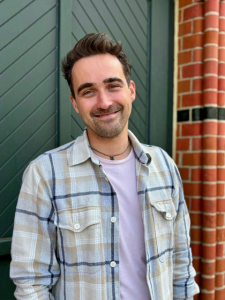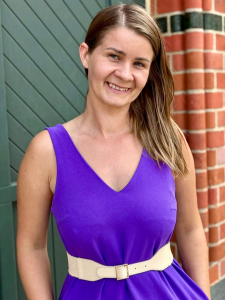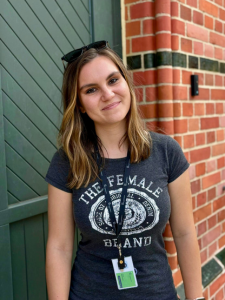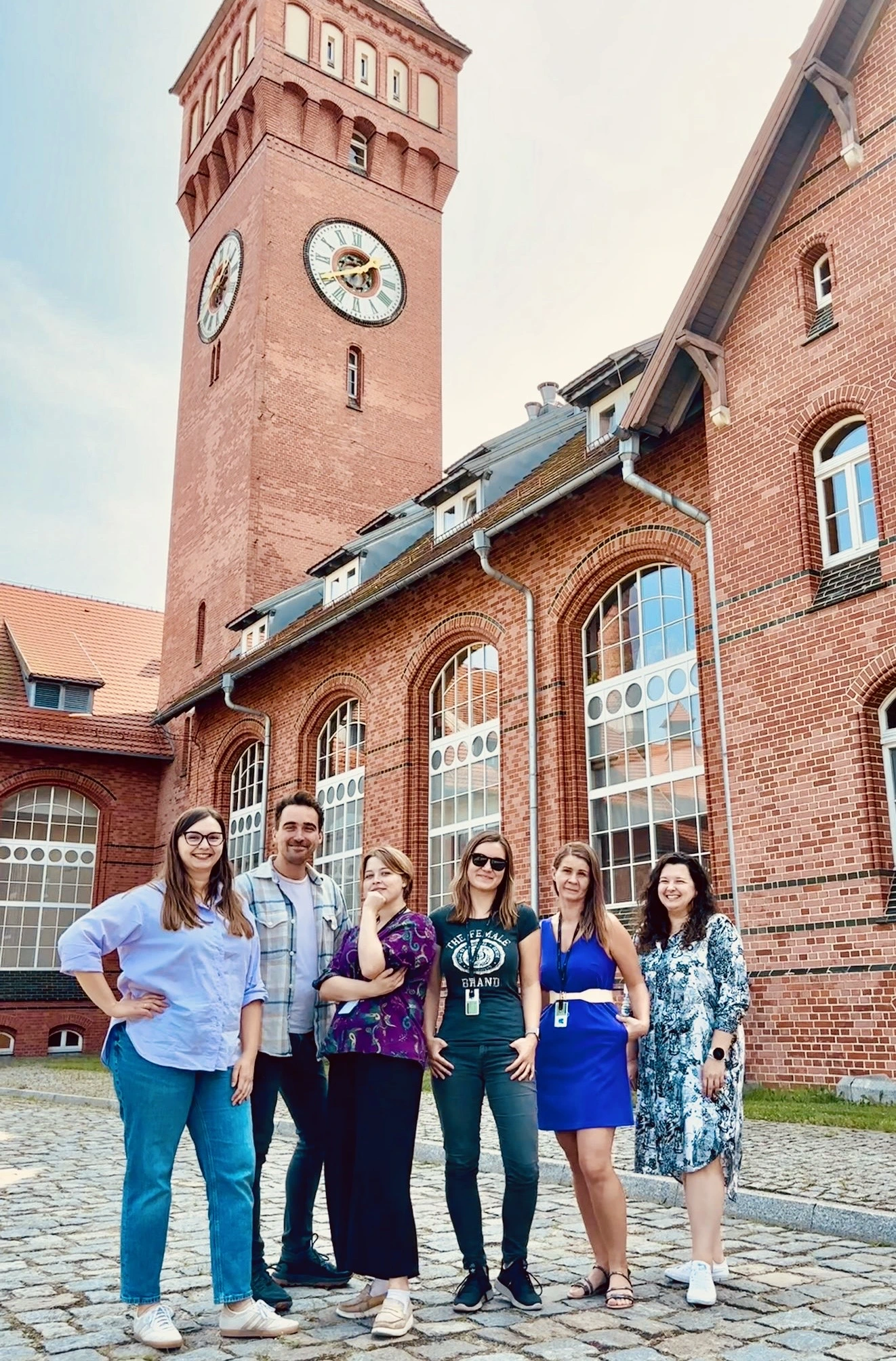Cancer Neurophysiology Group

This group bridges Neuroscience with Oncology aiming to comprehend neurogenic regulation of carcinogenesis and associated pain. Employing state-of-the-art techniques (i.e., in vivo optical imaging, electrophysiology and optogenetics) we selectively sample and modulate activity of genetically defined neuronal populations and analyse (FACS, tissue clearing, omics) their effects on tumour biology. In this pursuit, our group aspires to forge innovative therapies for cancer and associated pain, rooted in a deep understanding of neuronal systems.
Lab’s X/Twitter: @CancerNeuroLab
Should you wish to join the lab – do get in touch!”

Mateusz W. Kucharczyk, Ph.D., principal investigator
Head of Cancer Neurophysiology Research Group at Łukasiewicz – PORT, Wrocław, Poland
Visiting Research Fellow, Wolfson Sensory, Pain, and Regeneration Centre, King’s College London, London, UK
Mateusz earned Biotechnology degrees (BSc, MSc) from Jagiellonian University in Kraków. As a Marie Skłodowska-Curie trainee, he completed his PhD in Neuroscience at University College London, specialising in in vivo electrophysiology with Professor Anthony Dickenson and in vivo calcium imaging with Professor Stephen McMahon (King’s College London) to study cancer-induced bone pain. After learning optogenetics in Yves De Koninck Lab (Quebec, Canada), he worked as a PDRA in Dr Kirsty Bannister group (King’s College London), where he advanced opto- and chemogenetic techniques for studying descending modulatory circuits in health and disease.
Mat’s X/Twitter: @matwku

Monika Szczot, MSc
Lab Manager
Monika graduated in Biology from University of Wrocław (BSc) and from Wrocław University of Environmental and Life Sciences (MSc). With the previous experience as a Lab manager in the Synaptogenesis Research Group at PORT, she continues to fullfill this role in our team, being responsible for coordinating orders, budget control, documentation and overall laboratory organization. Privately yoga and pilates enthusiast, loving to travel, sail and ski.

Ewelina Krzywińska, PhD
Principal Scientist
Ewelina received her PhD in Health Biology from University of Montpellier (France) performed in Institute for Regenerative Medicine and Biotherapy. For her doctoral studies, she focused on the possibility of using metabolic drugs and NK-based immunotherapy to treat cancer (Krzywinska et al., EBioMedicine 2015). During her first post-doc at the Paris Cardiovascular Research Center (France), she studied the cytotoxic function of Natural Killer cells infiltrating hypoxic areas in tumour (Krzywinska et al., Nature Communications 2017) and VEGF signalling in myeloid cells (Klose & Krzywinska et al. Nature Communications 2016). During her 2nd post-doc at the Anatomy Institute at Zurich University (Switzerland), she focused on the impact of HIFs on ILC1 and NKp46+ ILC3 phenotype in healthy and pathological conditions (Sobecki & Krzywinska et al, Nature Communications 2021; Krzywinska & Sobecki et al, JEM 2022). Finally, she participated in vaccination-based immunotherapy project, where co-authors demonstrated the efficacy of a vaccination approach to mount antigen-specific cytotoxic T cell responses that reduce fibroblasts and fibrosis in the liver and lungs (Sobecki & Chen & Krzywinska et al. Cell Stem Cell 2022). Then, she became R&D Expert in private biotech company in Poland, where she was involved in development of biological assays and solving ongoing problems in the immuno-oncology projects. Currently, as a member of our team, she is dedicated to study the crosstalk between nerves, tumour and immune system, particularly important in the context of neurogenic control of peripheral immune and neoplastic changes. In her free time, she loves sailing and spending time actively outdoors.

Joanna Bernacka, PhD
Postdoc
Joanna received her master’s degree in neuroscience from Jagiellonian University and recently completed her doctoral studies at the Krakow Interdisciplinary Doctoral School, affiliated with Maj Institute of Pharmacology Polish Academy of Sciences. Her research, which spanned both her master’s and doctoral studies, focused on the noradrenergic regulation of dopamine release in the mesolimbic system, with a particular emphasis on how receptor mechanisms in the ventral tegmental area are modulated by stress. This work provided valuable insight into the interactions between the noradrenergic and dopaminergic systems, contributing significantly to our understanding of brain function under stress, and culminated in Joanna receiving her PhD in medical sciences in March 2024.
Joanna specialises in using physiological methods to study the complex dynamics of brain pathways. In her current role, she is responsible for leading the physiological aspects of a project focused on noradrenergic modulation of central sensory terminals.

Julia Niemczycka, MSc
Lab Technician
Julia earned her Bachelor’s and Master’s degrees in Pharmaceutical Biotechnology from Wrocław University of Science and Technology. As a part of her master’s thesis, she focused on optimizing the expression and purification conditions of nuclear receptors. Within our team, Julia’s primary responsibility is genotyping and supervising wet labs.

Eliza Kramarska, PhD
Postdoc
Eliza completed both her bachelor’s and master’s degrees in microbiology at the University of Wrocław. Her undergraduate research, conducted in collaboration with the Polish Academy of Sciences at the Institute of Immunology and Experimental Therapy, sparked her interest in antibodies and protein biochemistry. Following this, she moved to Belgium to participate in the ERASMUS+ programme, where she focused on protein biochemistry at the University of Louvain.
Eliza then pursued her PhD in Biomolecular Sciences with a focus on Biochemistry, as part of the Marie Skłodowska-Curie ITN BactiVax programme in Italy. During her PhD, she conducted research at the Institute of Bioimaging and Biostructures, part of the National Research Council of Italy in Naples, and obtained her diploma from Vanvitelli University.
Her work primarily focused on structure-based rational vaccine design, with a particular emphasis on developing vaccines to target gram-positive ESKAPE pathogens. Within the group, Eliza specialises in in silico approaches. Her personal research interests include interactions between host and microbes, as well as the application of advanced computational techniques to biological research. She is also actively engaged in science communication and science policy outreach, contributing to various initiatives organised by both local and European authorities.

Łukasz Pietras, PhD
Postdoc
Łukasz holds a BSc and MSc in Genetics and Experimental Biology from the University of Wrocław. From 2020 to 2024, he conducted his doctoral research at the Department of Physiology and Molecular Neurobiology at the University of Wrocław, graduating with distinction in May 2025. His research focused on the mechanisms regulating mitochondrial dynamics and mitochondrial autophagy in a cellular model.
In the Cancer Neurophysiology Group, Łukasz works on a bone cancer model, investigating the impact of dormant nociceptors on its development. Outside of work, he enjoys birdwatching, particularly observing ducks, hitchhiking, and reading about modern history.

Oleksandra Babeshko (Sasza), BSc
Student Scholar
Sasza earned her Bachelor’s degree in genetics and molecular biology from University of Wrocław, where she currently works on her Master’s in psychology. During her studies she took part in internships at the Department of Molecular Physiology and Neurobiology at the Faculty of Biological Sciences of the University of Wrocław, at the Laboratory of Cell Biophysics at the Nencki Institute of Experimental Biology and PAS in Warsaw and in the Biology of Astrocytes Group at the Life Sciences and Biotechnology Center in the Łukasiewicz PORT Research Network. In the Cancer Neurophysiology Group, Sasza performs animal behavioural studies and genotyping. Sasza is fascinated by neuroscience and eager to learn.

Agata Krużel, BSc
Summer Intern
Agata received her Bachelor’s degree from Jagiellonian University in Krakow and currently works on her Master’s at the Polish Academy of Sciences in the Department of Physiology, where she learns patch clamp electrophysiology to study spinal neuronal circuits. When she’s not pretending to be a mad scientist, she plays at home with her three cats and three dogs. She also escapes reality by diving into the worlds of fantasy and anime, because who needs the real world when there are dragons and giant robots?

This laboratory bridges Neuroscience with Oncology to investigate a role of the sympathetic and somatosensory systems in neurogenic mechanisms controlling tumorigenesis and related pain.
Cancer Neuroscience
Neuronal pathways travel from the brain to the spinal cord to influence somatosensation. They regulate spinal and primary sensory neuron activity, enabling the brain to finely tune signal levels transmitted through the spinal cord and govern the periphery via neurogenic mechanisms. Importantly, there exists an ongoing dialogue between nerves and tumours. For instance, tumour denervation slows or prevents neoplastic growth. Neuropeptides released by peptidergic nociceptors drive tumour neovascularisation and enhance cancer immunosurveillance. Furthermore, tumours at the early stages are usually not painful. We believe that presynaptic modulation of central sensory endings is the key aspect not only for nociception and pain control, but also other aspects of (patho)physiology. For instance, it can provide a neuroimmune link to the periphery, particularly important in the context of neurogenic control of peripheral immune and neoplastic changes. Since tumours development is regulated by neurogenic events, the control of neuronal activity may lead to development of a novel class of chemotherapeutics.
Perceptual Flexibility, Pain and Nociception
Our brain is a powerful organ, capable of re-interpreting the nature of sensory stimuli. An identical stimulus can appear excruciating or mildly irritating depending on the circumstance, for instance a wound hurts more at home than on a battlefield (Beecher, 1946). At the most fundamental level, this perceptual flexibility is dependent on descending modulatory controls: neural circuits which alter activity of spinal cord projection neurons that integrate all ascending peripheral somatosensory information. Therein, modulation of nociception can be achieved also via the activity of descending brain controls directly acting on primary afferent central terminals. In that way, the brain can ‘gate the level of painful signals’ that are to be passed onto the spinal transmission system2. It is the first checkpoint where nociception can be centrally modulated, and hence a very attractive target for analgesia. Additionally, primary afferent central terminals can also be controlled by local spinal circuits that are themselves subject to descending modulation. For technical reasons, presynaptic control of small calibre afferents (nociceptors) has hardly been explored, but they are critical to understanding nociception and neurogenic tumour and immune control. With novel technological approaches, we offer an unprecedented level of biophysical investigation into the function of those afferent terminals with a goal for the development of new painkillers.
Our approach
Employing a combination of high throughput in vivo electrophysiology (i.e. Neuropixels) and calcium imaging (i.e., Miniscopes and 2-photon) with opto- and chemogenetic modulation of genetically and anatomically defined neuronal circuits, we sample the activity of the spinal and peripheral neurons and correlate this activity with behavioural responses using machine learning-supported analysis. We aim to link network-wide neuronal function with top-down ability to influence both nociception and tumorigenesis. Changes in the tumour and its microenvironment are analysed with a state-of-the-art 3D tumour reconstruction using tissue clearing with light-sheet imaging, as well as on a molecular level with cytometry (FACS), RNAseq and high throughput spectroscopy. Our world-wide collaborations offer back and forward translation to clinic with somatosensory testing, MRI/PET, and CT.
Present:
2024 – 2026: Strategic Partnerships Grant, National Centre for Academic Exchange, NAWA (1.89M PLN). ‘Neuro-Immune Cancer Consortium’. Project in collaboration with Dr Franziska Denk (King’s College London) and Professor Anne Marie Heegaard (University of Copenhagen).
Two fully funded positions (1x Postdoc, 1x Research Assistant).
#cancer neuroscience #silent nociceptors #neurogenic inflammation #cancer pain #neuroimmune #FACS #light-sheet imaging #tissue clearing #clinical translation
2023 – 2026: Starting Budget, Polish Center for Technology Development (2.9M PLN). ‘Neurogenic mechanisms controlling tumourigenesis”.
Three fully funded positions (1x Postdoc, 1x Lab Manager, 1x Technician).
#cancer neuroscience #noradrenaline #CGRP #NGF #silent nociceptors #cancer pain #neuroimmune #FACS #light-sheet imaging #tissue clearing
2023 – 2026: Sonata 18, National Science Center (Poland) Research Grant (3.49M PLN). ‘Noradrenergic modulation of the central sensory terminals”.
Three fully funded positions (2x Postdoc, 1x PhD student).
#neuroscience #noradrenaline #DPMS #nociception #pain #in vivo electrophysiology #optogenetics #2-photon imaging #pain behaviour #computer vision
Past:
2022 – 2023: Miniatura, National Science Center (Poland) Research Grant (45.4k PLN). ‘Characterisation of somatosensory changes in an animal model of ischemic stroke’.
#neuroscience #ischemic stroke #DPMS #nociception #pain #in vivo electrophysiology #pain behaviour
2022: Guarantors of Brain Travel Grant for IASP2022 Pain Congress in Toronto (4.8k PLN)
2022: Improving Racial Diversity and Inclusion at King’s Award (18.8k PLN)
2021: King’s College London Early Career Research Award (12.7k PLN)
2019: Polish National Agency for Academic Exchange Collaboration Grant (7.5k PLN)
2015 – 2018: European Union Marie Skłodowska-Curie PhD Scholarship (690k PLN)
2012 – 2013: Foundation for Polish Science Master Award (12.7k PLN)
2011 – 2012: Jagiellonian University Rector ‘University Top 5%’ Scientific Award (6.5k PLN)
Parallel Human and Rat Investigation of the Interaction Between Descending and Spinal Modulatory Mechanisms. Fieldwalker A, Patel R, Zhao L, Kucharczyk MW, Mansfield M, Bannister K. A. Eur J Pain, 2025, PMID: 39853871
Deep sequencing of Phox2a nuclei reveals five classes of anterolateral system neurons. Bell AM, Utting C , Dickie AC, Kucharczyk MW, Quillet R, Gutierrez-Mecinas M, Razlan AN, Cooper AH, Lan Y, Hachisuka J, Weir GA, Bannister K, Watanabe M, Kania A, Hoon MA, Macaulay IC, Denk F, Todd AJ. PNAS, 2024, (preprint: BioRxiv), PMID: 38805282.
A critical brainstem relay for mediation of diffuse noxious inhibitory controls Kucharczyk, MW*, Di Domenico F, Bannister K. Brain, 2023, (preprint: BioRxiv), PMID: 36625030
Distinct brainstem to spinal cord noradrenergic pathways inversely regulate spinal neuronal activity Kucharczyk, MW*, Di Domenico F, Bannister K.
Brain, 2022 (preprint: BioRxiv), PMID: 35245374
Paper selected as Editor’s choice by International Association for the Study of Pain research forum, and covered by King’s College London News.
The stage specific plasticity of descending modulatory controls in a rodent model of cancer induced bone pain Kucharczyk, MW*, Derrien D, Dickenson AH, Bannister K. Cancers (Basel), 2020 (preprint: BioRxiv), PMID: 33172040
Activation of the Descending Pain Modulatory System Using Cuff Pressure Algometry: Back Translation From Man to Rat
Cummins T, Kucharczyk, MW, Bannister K.
European Journal of Pain, 2020, PMID: 32350984
The impact of bone cancer on the peripheral encoding of mechanical pressure stimuli Kucharczyk, MW*, Chisholm KI, Denk F, Dickenson AH, Bannister K, McMahon SB. Pain, 2020 (preprint: BioRxiv), PMID: 32701848
Neuropathy following spinal nerve injury shares features with the irritable nociceptor phenotype: A back-translational study of oxcarbazepine
Patel R, Kucharczyk MW, Montagut-Bordas C, Lockwood S, Dickenson AH.
European Journal of Pain, 2019, PMID: 30091265
The reduced level of growth factors in an animal model of depression is accompanied by regulated necrosis in the frontal cortex but not in the hippocampus
Kucharczyk MW*, Kurek A, Pomierny B, Detka J, Papp M, Tota K, Budziszewska B. Psychoneuroendocrinology, 2018, PMID: 29775875
Tuning in C-nociceptors to reveal mechanisms in chronic neuropathic pain
Jonas R, Namer B, Stockinger L, Chisholm K, Schnakenberg M, Landmann G, Kucharczyk MW, Konrad C, Schmidt R, Carr R, McMahon SB, Schmelz M, Rukwied R.
Annals of Neurology, 2018, PMID: 29659054
Hypothalamic insulin and glucagon-like peptide-1 levels in an animal model of depression and their effect on corticotropin-releasing hormone promoter gene activity in a hypothalamic cell line Detka J, Slusarczyk J, Kurek A, Kucharczyk MW, Adamus T, Konieczny P, Kubera M, Basta-Kaim A, Lason W, Budziszewska B. Pharmacological Reports, 2018, PMID: 30831439
The multiplicity of spinal AA-5-HT anti-nociceptive action in a rat model of neuropathic pain
Malek N, Kostrzewa M, Makuch W, Pajak A, Kucharczyk MW, Piscitelli F, Przewlocka B, Di Marzo V, Starowicz K.
Pharmacological Research, 2016, PMID: 27326920
Beneficial impact of intracerebroventricular fractalkine administration on behavioral and biochemical changes induced by prenatal stress in adult rats: Possible role of NLRP3 inflammasome pathway
Slusarczyk J, Trojan E, Wydra K, Glombik K, Chamera K, Kucharczyk MW, Budziszewska B, Kubera M, Lason W, Filip M, Basta-Kaim A. Biochemical Pharmacology, 2016, PMID: 27206338
Pro-apoptotic Action of Corticosterone in Hippocampal Organotypic Cultures
Kurek A, Kucharczyk MW, Detka J, Slusarczyk J, Trojan E, Glombik K, Bojarski B, Ludwikowska A, Lason W, Budziszewska B.
Neurotoxicity Research, 2016, PMID: 27189478
Chronic mild stress influences nerve growth factor through a matrix metalloproteinase-dependent mechanism Kucharczyk MW*, Kurek A, Detka J, Slusarczyk J, Papp M, Tota K, Basta-Kaim A, Kubera M, Lason W, Budziszewska B.
Psychoneuroendocrinology, 2015, PMID: 26771945
Brain glucose metabolism in an animal model of depression
Detka J, Kurek A, Kucharczyk MW, Glombik K, Basta-Kaim A, Kubera M, Lason W, Budziszewska B. Neuroscience, 2015, PMID: 25819664
The importance of TRPV1-sensitisation factors for the development of neuropathic pain Malek N, Pajak A, Kolosowska N, Kucharczyk MW, Starowicz K.
Molecular and Cellular Neuroscience, 2015, PMID: 25662734
Alterations in the anandamide metabolism in the development of neuropathic pain Malek N, Kucharczyk MW, Starowicz K.
BioMed Research International, 2014, PMID: 25276812
Review Manuscripts:
Developments in understanding Diffuse Noxious Inhibitory Controls: Pharmacological evidence from pre-clinical research
Kucharczyk, MW^, Valiente D^, Bannister K.
Journal of Pain Research, 2021, PMID: 33907456
Introducing Descending Control of Nociception: a measure of diffuse noxious inhibitory controls in conscious animals
Bannister K^, Kucharczyk, MW^, Graven-Nielsen T, Porreca F.
Pain, 2021, PMID: 33470750
Hopes for the Future of Pain Control Bannister K, Kucharczyk MW, Dickenson. AH. Pain Therapy, 2017, PMID: 28536900

